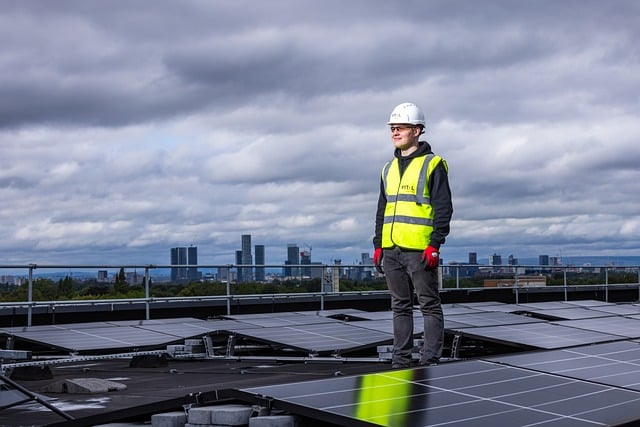“Power Your Project Right: Choose the Best Solar Wiring for Maximum Efficiency!”
Choosing the best solar wiring for your project is crucial for ensuring efficiency, safety, and longevity of your solar power system. The right wiring not only facilitates optimal energy transfer but also minimizes energy loss and potential hazards. Factors to consider include wire gauge, insulation type, temperature rating, and compatibility with solar panels and inverters. Understanding the specific requirements of your solar setup, including voltage and current ratings, as well as local codes and regulations, will help you make informed decisions. This guide will outline the key considerations and best practices for selecting the most suitable solar wiring for your needs.
Understanding Solar Wiring Types
When embarking on a solar energy project, one of the critical components to consider is the type of wiring that will be used. Understanding the various solar wiring types is essential for ensuring the efficiency, safety, and longevity of your solar installation. The most common types of wiring used in solar applications include photovoltaic (PV) wire, THHN wire, and USE-2 wire, each with its unique characteristics and applications.
PV wire is specifically designed for solar applications, making it a popular choice among installers. This type of wire is built to withstand the harsh environmental conditions that solar panels often face, such as extreme temperatures, moisture, and UV exposure. PV wire is typically rated for direct burial and is available in various gauges, allowing for flexibility in installation. Its insulation is made from materials that resist degradation over time, ensuring that the wiring maintains its integrity and performance throughout the lifespan of the solar system. When selecting PV wire, it is crucial to consider the ampacity, or the maximum amount of current the wire can safely carry, as this will directly impact the efficiency of your solar energy system.
In contrast, THHN wire, which stands for Thermoplastic High Heat-resistant Nylon-coated wire, is a general-purpose wire that is often used in various electrical applications, including residential and commercial wiring. While THHN wire can be used in solar installations, it is essential to note that it is not specifically designed for outdoor use. Therefore, if you choose to use THHN wire in your solar project, it is vital to ensure that it is properly protected from the elements, such as by running it through conduit. Additionally, THHN wire is typically less expensive than PV wire, which may be a consideration for budget-conscious projects. However, the potential for reduced longevity and increased maintenance should be weighed against the initial cost savings.
Another option is USE-2 wire, which is designed for underground service applications. This type of wire is also suitable for solar installations, particularly when the wiring needs to be buried. USE-2 wire is rated for direct burial and is resistant to moisture and UV rays, making it a durable choice for outdoor applications. Similar to PV wire, USE-2 wire is available in various gauges, allowing for customization based on the specific requirements of your solar project. When selecting USE-2 wire, it is essential to consider the voltage drop, which can affect the overall efficiency of the system. A lower voltage drop means that more energy is delivered to the inverter, maximizing the performance of your solar installation.
In addition to the type of wire, it is also important to consider the connectors and junction boxes that will be used in conjunction with the wiring. Proper connectors ensure a secure and reliable connection, which is vital for maintaining the efficiency of the solar system. Furthermore, junction boxes should be rated for outdoor use and designed to protect the wiring from moisture and debris.
Ultimately, choosing the best solar wiring for your project involves understanding the specific requirements of your installation and the environmental conditions it will face. By carefully considering the characteristics of PV wire, THHN wire, and USE-2 wire, you can make an informed decision that will enhance the performance and longevity of your solar energy system. This thoughtful approach will not only ensure a successful installation but also contribute to the overall sustainability and efficiency of your solar project.
Factors to Consider for Solar Wiring Selection

When embarking on a solar project, one of the most critical decisions you will face is selecting the appropriate wiring. The right solar wiring not only ensures the efficiency and safety of your system but also contributes to its longevity. To make an informed choice, several factors must be considered, each playing a vital role in the overall performance of your solar installation.
First and foremost, the wire gauge is a crucial aspect to evaluate. The American Wire Gauge (AWG) system indicates the thickness of the wire, which directly affects its ability to carry current. Thicker wires, represented by lower AWG numbers, can handle more current with less resistance, thereby minimizing energy loss. For most residential solar systems, a wire gauge of 10 to 12 AWG is typically sufficient, but this can vary based on the distance between the solar panels and the inverter. As the distance increases, the wire gauge may need to be adjusted to prevent voltage drop, which can significantly impact system efficiency.
In addition to wire gauge, the type of insulation used in solar wiring is another essential consideration. Solar installations are often exposed to harsh environmental conditions, including UV radiation, moisture, and extreme temperatures. Therefore, selecting wires with durable insulation, such as those rated for sunlight resistance (often referred to as “UV-resistant”), is imperative. Common insulation materials include thermoplastic elastomer (TPE) and cross-linked polyethylene (XLPE), both of which offer excellent protection against environmental stressors. By choosing wires with robust insulation, you can enhance the durability and reliability of your solar system.
Moreover, the application of the wiring must be taken into account. Different components of a solar system, such as the solar panels, inverters, and batteries, may require specific types of wiring. For instance, the wiring connecting the solar panels to the inverter typically needs to be rated for direct current (DC), while the wiring from the inverter to the electrical panel may require alternating current (AC) rated wiring. Understanding these distinctions is vital to ensure compatibility and safety throughout the system.
Another factor to consider is the local electrical codes and regulations. Compliance with these codes is not only a legal requirement but also a safety measure that protects both the installation and the occupants of the property. Local codes may dictate specific wire types, gauges, and installation practices, so it is essential to familiarize yourself with these regulations before making a purchase. Consulting with a licensed electrician or solar installer can provide valuable insights into the requirements specific to your area.
Furthermore, the cost of solar wiring should not be overlooked. While it may be tempting to opt for the cheapest option available, investing in high-quality wiring can lead to long-term savings by reducing maintenance costs and improving system efficiency. It is advisable to strike a balance between cost and quality, ensuring that the wiring selected meets both budgetary constraints and performance expectations.
Lastly, consider the future scalability of your solar project. If you plan to expand your system in the future, selecting wiring that can accommodate additional panels or components can save you time and money down the line. By anticipating future needs, you can avoid the hassle of replacing wiring later on.
In conclusion, choosing the best solar wiring for your project involves careful consideration of wire gauge, insulation type, application requirements, local regulations, cost, and future scalability. By taking these factors into account, you can ensure that your solar installation operates efficiently, safely, and reliably for years to come.
Common Mistakes in Solar Wiring Choices
When embarking on a solar project, one of the most critical aspects to consider is the wiring. However, many individuals and organizations make common mistakes that can compromise the efficiency and safety of their solar systems. Understanding these pitfalls is essential for ensuring a successful installation and optimal performance.
One prevalent mistake is underestimating the importance of wire gauge. The wire gauge determines the amount of current that can safely pass through the wire without overheating. Using a wire that is too thin for the application can lead to significant energy losses and even pose a fire hazard. Conversely, opting for a wire that is too thick can unnecessarily increase costs and complicate installation. Therefore, it is crucial to consult the National Electrical Code (NEC) guidelines and consider the specific requirements of your solar system, including the distance between components and the expected current load.
Another common error is neglecting to account for voltage drop. As electricity travels through wires, it experiences a drop in voltage, which can affect the performance of solar panels and inverters. This issue is particularly pronounced in larger systems where the distance between the solar panels and the inverter is significant. To mitigate voltage drop, it is advisable to use a wire gauge that is appropriate for the distance involved. Additionally, employing shorter wire runs whenever possible can help maintain optimal voltage levels, ensuring that your solar system operates efficiently.
Moreover, many people overlook the importance of using the right type of wire for outdoor applications. Solar installations are often exposed to harsh environmental conditions, including UV radiation, moisture, and temperature fluctuations. Using standard electrical wire in these situations can lead to premature degradation and failure. Instead, it is essential to select wires specifically designed for solar applications, such as those rated for sunlight exposure and moisture resistance. This choice not only enhances the longevity of the wiring but also contributes to the overall reliability of the solar system.
Furthermore, failing to properly secure and protect wiring can lead to significant issues down the line. Loose or unprotected wires are susceptible to damage from environmental factors, such as wind, rain, and wildlife. To prevent these problems, it is vital to use appropriate conduits and cable management systems. This not only safeguards the wiring but also ensures compliance with local electrical codes, which often mandate specific installation practices for safety reasons.
In addition to these technical considerations, many individuals underestimate the importance of consulting with professionals. While DIY projects can be rewarding, solar wiring requires a level of expertise that is often best left to trained electricians or solar installers. These professionals can provide valuable insights into the best practices for wiring, ensuring that your system is not only efficient but also safe and compliant with regulations.
In conclusion, avoiding common mistakes in solar wiring choices is crucial for the success of any solar project. By paying attention to wire gauge, accounting for voltage drop, selecting the right type of wire, securing and protecting wiring, and consulting with professionals, you can significantly enhance the performance and longevity of your solar system. Taking these factors into consideration will not only optimize energy production but also provide peace of mind, knowing that your investment is well-protected and functioning as intended.
Tips for Ensuring Safety in Solar Wiring Installation
When embarking on a solar wiring installation project, ensuring safety is paramount. The first step in this process is to familiarize yourself with the relevant electrical codes and standards that govern solar installations in your area. These codes are designed to protect both the installer and the end-user, ensuring that the system operates safely and efficiently. By adhering to these regulations, you not only comply with legal requirements but also enhance the reliability of your solar system.
Next, it is crucial to select the appropriate wiring materials. Solar installations typically require specific types of wire, such as photovoltaic (PV) wire, which is designed to withstand the harsh outdoor conditions that solar panels often face. This wire is usually rated for direct burial and is resistant to UV radiation, moisture, and extreme temperatures. Additionally, using the correct gauge of wire is essential; undersized wires can lead to overheating and potential fire hazards, while oversized wires may be unnecessarily costly and cumbersome. Therefore, consulting the National Electrical Code (NEC) or a qualified electrician can provide valuable guidance in determining the right wire size for your system.
Moreover, proper installation techniques play a significant role in ensuring safety. When routing wires, it is important to avoid sharp edges and potential pinch points that could damage the insulation over time. Utilizing conduit can provide an extra layer of protection, shielding the wires from physical damage and environmental factors. Furthermore, securing wires with appropriate fasteners prevents them from moving or becoming loose, which could lead to wear and tear. As you work, always keep in mind the importance of maintaining a clean and organized workspace; this not only enhances safety but also improves efficiency during the installation process.
In addition to these considerations, grounding your solar system is a critical safety measure. Proper grounding helps to protect both the equipment and the individuals working on or near the system from electrical shocks. It is essential to follow the manufacturer’s guidelines and local codes when installing grounding systems. This typically involves connecting the solar panels, inverters, and other components to a grounding rod or system that dissipates any stray electrical currents safely into the earth.
Furthermore, it is advisable to incorporate circuit protection devices, such as fuses or circuit breakers, into your solar wiring setup. These devices act as safeguards against overcurrent situations, which can occur due to faults or surges in the system. By interrupting the flow of electricity when necessary, these protective devices can prevent damage to your solar equipment and reduce the risk of fire.
Lastly, regular maintenance and inspections of your solar wiring system are essential for long-term safety and performance. Periodically checking for signs of wear, corrosion, or loose connections can help identify potential issues before they escalate into serious problems. Keeping a detailed log of inspections and maintenance activities can also be beneficial, providing a clear record of the system’s condition over time.
In conclusion, ensuring safety in solar wiring installation involves a combination of adhering to electrical codes, selecting appropriate materials, employing proper installation techniques, grounding the system, incorporating circuit protection, and conducting regular maintenance. By following these guidelines, you can create a safe and efficient solar energy system that will serve you well for years to come.
Q&A
1. **What type of wire is best for solar installations?**
Use UV-resistant, stranded copper wire, specifically rated for solar applications, such as THHN or USE-2.
2. **What gauge wire should I use for my solar project?**
The wire gauge depends on the system size and distance; typically, 10 AWG to 12 AWG is suitable for most residential systems.
3. **How do I determine the correct wire length for my solar setup?**
Measure the distance from the solar panels to the inverter and add extra length for routing and connections, considering voltage drop.
4. **What factors should I consider regarding wire insulation?**
Ensure the wire insulation is rated for high temperatures and is resistant to moisture, UV exposure, and environmental conditions.
Conclusion
When choosing the best solar wiring for your project, consider factors such as wire gauge, insulation type, temperature rating, and compatibility with your solar components. Ensure the wire can handle the maximum current and voltage of your system while being durable enough for outdoor conditions. Additionally, prioritize quality and compliance with relevant standards to ensure safety and efficiency. Ultimately, selecting the right solar wiring will enhance the performance and longevity of your solar energy system.



